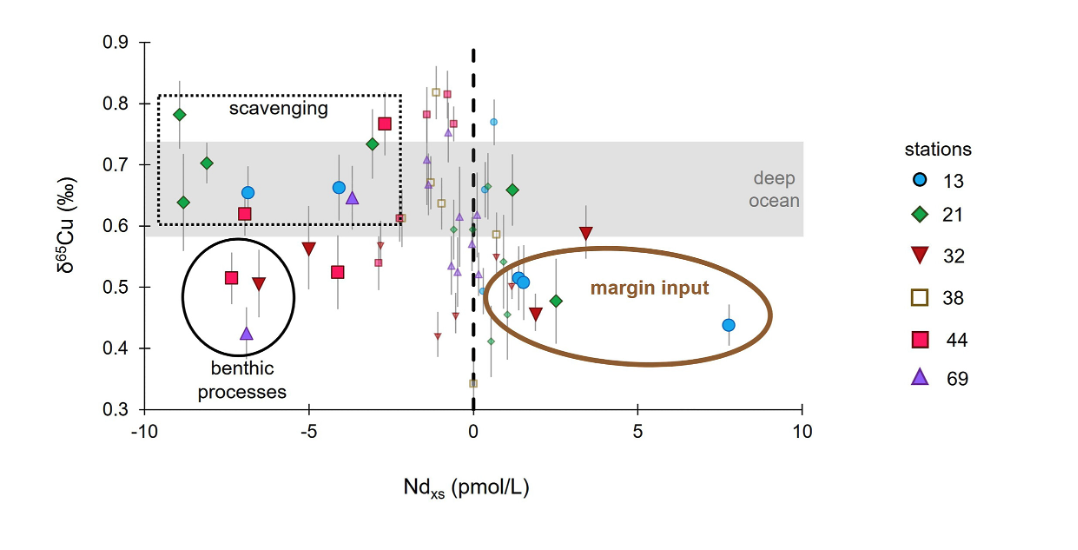Coupling copper and neodymium data highlights the importance of the margin sources for the copper oceanic cycle
Among the bioactive metals, copper’s marine cycle (Cu) is far from being understood yet. Lemaitre and co-workers (2025, see reference below) analysed the dissolved (dCu) concentrations and isotopes along the GEOVIDE (GA01) section. Their data reveal that i) in the surface waters, microorganisms take up dCu along with carbon, leaving “heavy” dCu in the surrounding waters and ii) at depth, particle remineralization and (reversible) scavenging onto particles, are also influencing dCu distributions.
The authors also established the relative importance of the external dCu sources to the North Atlantic (atmospheric, hydrothermal, benthic…). A fruitful strategy was to compare the dCu data to neodymium concentration (Lagarde et al., 2024) allowing them to highlight the Iberian margin as a source of Cu to the ocean. Overall, the margin inputs could contribute significantly to the missing source of Cu in the ocean.

References:
Lemaitre, N., Lagarde, M., & Vance, D. (2025). Controls on Dissolved Cu Concentrations and Isotopes in the North Atlantic: The Importance of Continental Margins. Global Biogeochemical Cycles, 39. Access the paper: 10.1029/2024gb008453
Lagarde, M., Pham, V. Q., Lherminier, P., Belhadj, M., & Jeandel, C. (2024). Rare Earth elements in the North Atlantic, part I: Non-conservative behavior reveals margin inputs and deep waters scavenging. Chemical Geology, 664, 122230. Access the paper: 10.1016/j.chemgeo.2024.122230
